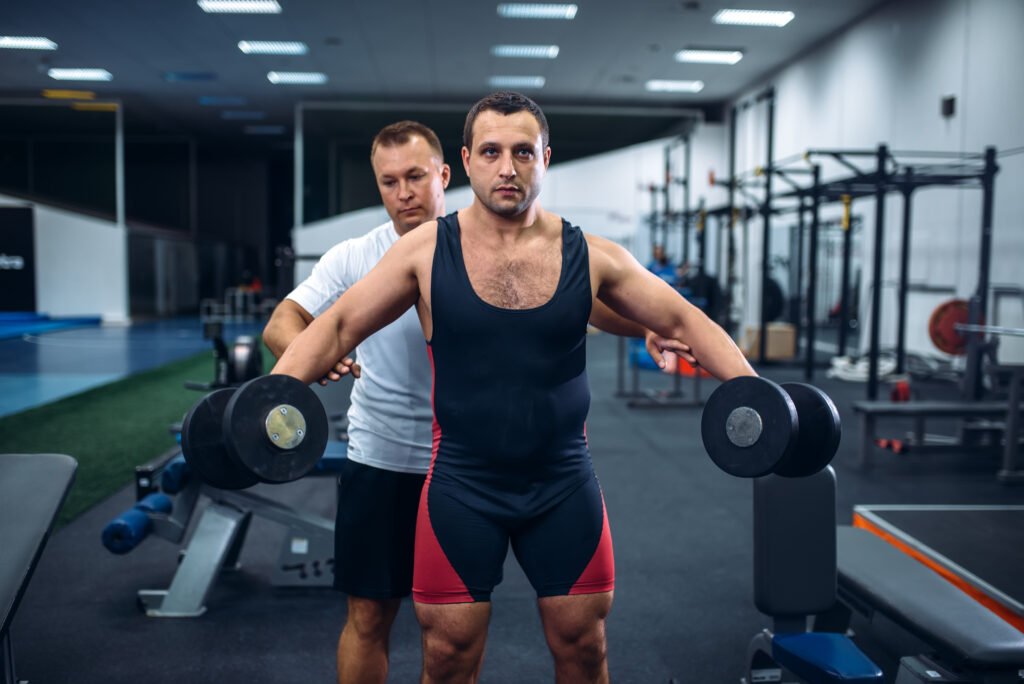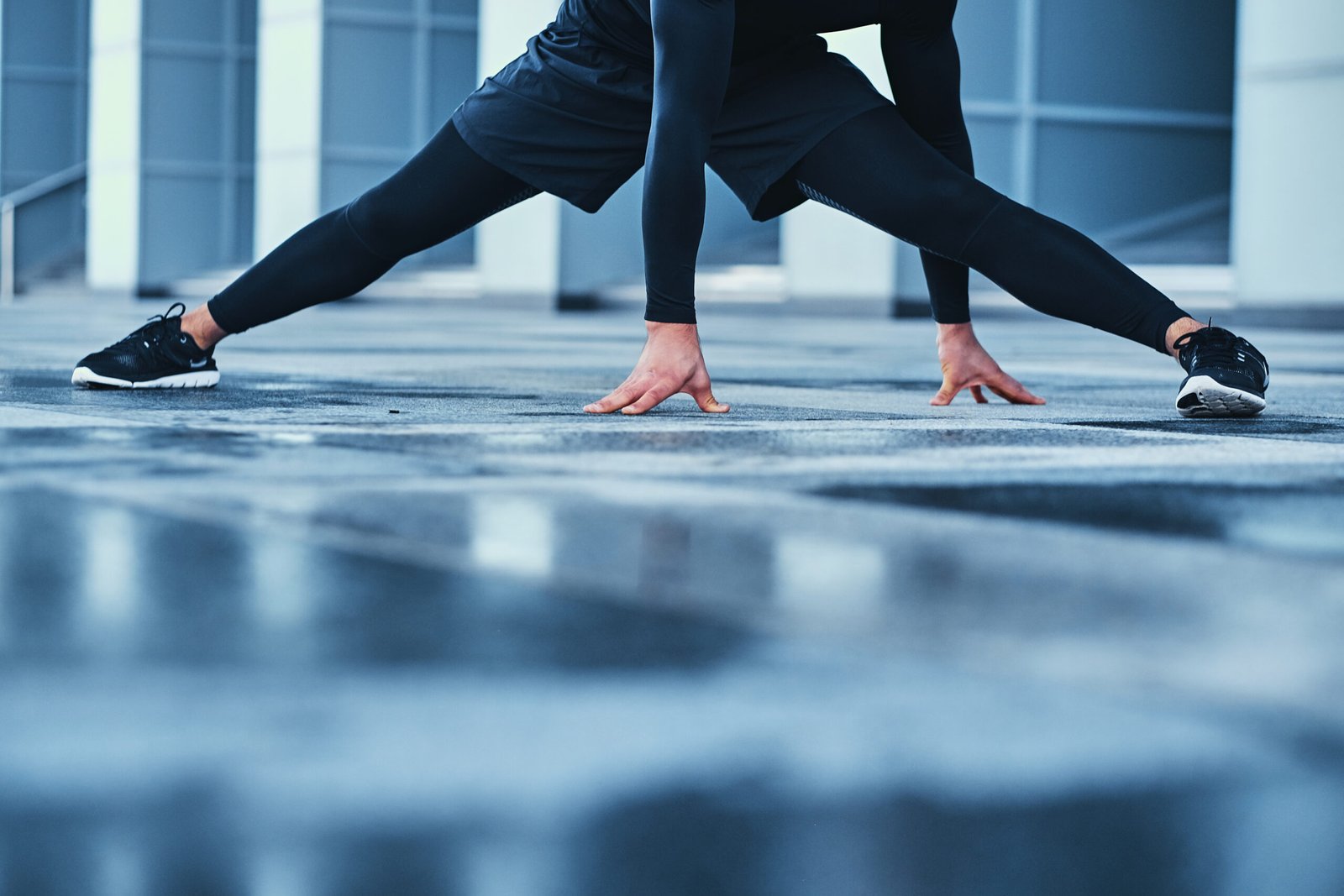Introduction
The best correct exercise techniques to avoid injuries and achieve optimal performance are the cornerstone of any successful training program. By following the right exercise techniques, you can reduce the risk of injuries and enhance athletic performance efficiency. Many people suffer injuries due to incorrect exercise execution, which negatively impacts their progress. Therefore, it is essential to know the correct methods of performing exercises to ensure your safety while engaging in physical activities. In this section, we will review some of the most important correct exercise techniques that can help you achieve your athletic goals safely.

Table of Contents
- The Importance of Warming Up Before Exercise
- Correct Exercise Techniques
- Choosing the Right Sports Equipment
- Gradual Training and Cautiously Increasing Intensity
- The Importance of Rest and Recovery
- Nutrition and Its Role in Injury Prevention
- Listening to Your Body and Dealing with Pain
- Focusing on Flexibility and Stretching Exercises
- Conclusion: Exercising Smartly for Safe Results
- Frequently Asked Questions
1. The Importance of Warming Up Before Exercise
Warming up before exercise is considered one of the essential steps that every athlete should follow. Warming up not only helps prepare the muscles for physical activity but also contributes to improving flexibility and increasing blood flow to muscle tissues. In other words, a good warm-up can significantly reduce the risk of injuries.
Detailed Review
To ensure effective warming up, it is best to range the duration between 10 to 15 minutes and include light exercises such as brisk walking or jogging in place. You can also incorporate dynamic stretching exercises that help improve the range of motion. Thus, integrating these exercises into your daily routine will contribute to enhancing your readiness for intense workouts and reduce your likelihood of injury.
For example, if you plan to lift weights, starting with warm-up exercises that target the muscles you will use will enhance your performance and help distribute effort evenly across your muscles, thereby reducing the risk of straining your muscles or joints.

2. Correct Exercise Techniques
When it comes to avoiding injuries, proper techniques are key. Exercising incorrectly can lead to serious physical injuries such as muscle tears or joint damage. For this reason, learning the correct movements from the outset is crucial for maintaining your safety while exercising.
Detailed Review
Each exercise requires specific techniques to ensure its effectiveness and minimize the risk of injuries. For example, if you are performing squats, make sure your back is straight and that you are executing the movement using your leg muscles rather than bending at your back. Furthermore, if you are a beginner, it is best to start learning the basics under the supervision of a personal trainer to ensure you perform the movements correctly.
By using correct exercise techniques, you will not only reduce your chances of injury but also achieve faster and more sustainable results. Additionally, understanding how to coordinate your body movements effectively will make your workouts more efficient and safer.

3. Choosing the Right Sports Equipment
Using the correct equipment plays an important role in protecting your body from injuries. Whether you are exercising at the gym or at home, your choice of appropriate shoes or sports tools should be based on the type of exercise you are performing.
Detailed Review
For instance, if you are running, good running shoes designed specifically for that purpose will provide proper support for your feet and relieve pressure on your knee and ankle joints. On the other hand, if you are lifting weights, using a back support belt can protect you from strain injuries to the spine.
Therefore, always ensure that the equipment you use is suitable for the type of exercise you are performing. Good equipment is not only a means to improve performance but also an important factor in reducing unnecessary physical stress, which can lead to injuries.

4. Gradual Training and Cautiously Increasing Intensity
It is essential when engaging in physical exercises to commit to gradually increasing the intensity. Starting with high-intensity exercises puts inappropriate pressure on the muscles and joints, which may lead to strains or injuries.
Detailed Review
It is best to begin exercises with light weights or low intensity and then gradually increase the weight or duration. This approach allows your body to adapt to the gradual increase in intensity and reduces the risks of injuries. For example, if you are jogging, do not start with long distances immediately; instead, increase the distance gradually over the days.
Moreover, employing a training method known as “progressive overload” is an effective strategy. This method allows you to slowly increase the intensity while monitoring your body’s response to the changes. If you experience any unusual fatigue or pain, it may be necessary to reduce the intensity and revert to a lower level for a short period.

5. The Importance of Rest and Recovery
Rest is as important as the exercise itself. In fact, rest is a fundamental part of the muscle-building process and enhances athletic performance. Without sufficient rest periods, your muscles and joints may become fatigued and stressed, increasing the likelihood of injuries.
Detailed Review
While exercise helps strengthen muscles, the body needs time to recover and rebuild the muscle fibers that were torn during exercise. Therefore, it is recommended to allocate rest days between strenuous workouts. It is good to incorporate relaxation sessions or low-intensity workouts like yoga or walking into your exercise routine. These activities promote circulation and stimulate the healing process.
Additionally, techniques such as massage and stretching exercises post-workout contribute to enhancing recovery and reducing muscle tension, helping to avoid injuries in the long term.
6. Nutrition and Its Role in Injury Prevention
Feeding your body the right nutrients is essential to ensure your muscles are strong and healthy. Balanced nutrition enhances your ability to endure strenuous workouts and aids recovery after exercise.
Detailed Review
The body needs proteins to repair muscles and build muscle tissues. In addition, carbohydrates provide the energy needed for optimal performance during workouts. Healthy fats help protect the joints and maintain their health. Additionally, it is crucial to drink adequate amounts of water to keep the muscles hydrated and avoid muscle cramps.
Following a balanced diet can also help prevent injuries resulting from nutrient deficiencies, such as osteoporosis or muscle weakness. If your nutrition is poor, you may find that your muscles do not respond well to training, putting you at a higher risk of injuries.

7. Listening to Your Body and Dealing with Pain
Listening to your body’s signals is one of the most important tools to avoid injuries. If you feel unusual pain or fatigue during exercise, it is best to stop and reassess your condition.
Detailed Review
Mild muscle soreness may indicate normal exertion, but sharp or persistent pain can be a sign of injury. In this case, you should take a break and seek medical advice if the pain persists. Insisting on continuing to exercise despite the pain may worsen the injury, keeping you away from workouts for longer.
Moreover, it is important to pay attention to any unusual changes in your body, such as swelling or redness, as they may be indicators of a potential injury.
8. Focusing on Flexibility and Stretching Exercises
Static and dynamic stretching exercises help improve muscle and joint flexibility, enhancing your ability to move freely during workouts. They also reduce muscle tension and increase blood flow to tissues, thereby decreasing the risks of tears or muscle strain.
Detailed Review
It is best to incorporate stretching exercises at the beginning of the workout as part of the warm-up and at the end as part of the cool-down. For instance, you can perform dynamic stretching before starting the workout to prepare the muscles and joints for movement, while static stretching after the workout helps calm the muscles and promote recovery.
Committing to regular stretching exercises will increase your long-term flexibility, thereby reducing the likelihood of injuries caused by muscle strain or joint stress.
9. Conclusion: Exercising Smartly for Safe Results
Exercising smartly is the key to achieving your physical goals without exposing yourself to injuries. This requires attention to all aspects related to exercise, starting with proper warming up to choosing the right equipment, while considering good nutrition and adequate rest.
By following the tips and guidelines outlined in this article, you can ensure a safer and more effective workout experience. Always remember that exercising is not just a physical activity; it is a holistic process that requires a balance between physical effort and self-care. By listening to your body and adhering to a gradual approach, you will be able to achieve the best results without the risk of injuries.
10. Frequently Asked Questions
- What is the importance of warming up before exercise?
- Warming up increases blood flow to the muscles and prepares them for physical activity, reducing the risk of injuries and enhancing athletic performance.
- How can I know if I am exercising correctly?
- It is best to consult a personal trainer or use visual resources (such as instructional videos) to ensure you are following correct exercise techniques.
- What should I do if I feel pain during exercise?
- If you experience sharp or unusual pain, you should stop exercising immediately. Continuing to exercise despite the pain may worsen the injury. If the pain persists, it is advisable to consult a doctor.
- Is rest after exercise necessary?
- Yes, rest is essential for muscle recovery and rebuilding muscle tissues, contributing to muscle strengthening and improving athletic performance.
- How can I improve my flexibility to avoid injuries?
- You can improve your flexibility by regularly committing to stretching exercises. Dynamic stretching before exercise and static stretching after exercise help increase flexibility and reduce muscle tension.
- Does nutrition affect injury prevention?
- Yes, good nutrition contributes to enhancing the health of muscles and joints, reducing the likelihood of injuries. Proteins help build muscles, while carbohydrates provide the energy needed for optimal performance.
- What are the signs that indicate I may be at risk of injury?
- Signs such as sharp pain, swelling, or persistent muscle cramps may be warning signals that your body is experiencing excessive strain or potential injury. In such cases, it is best to stop exercising and consult a specialist.

